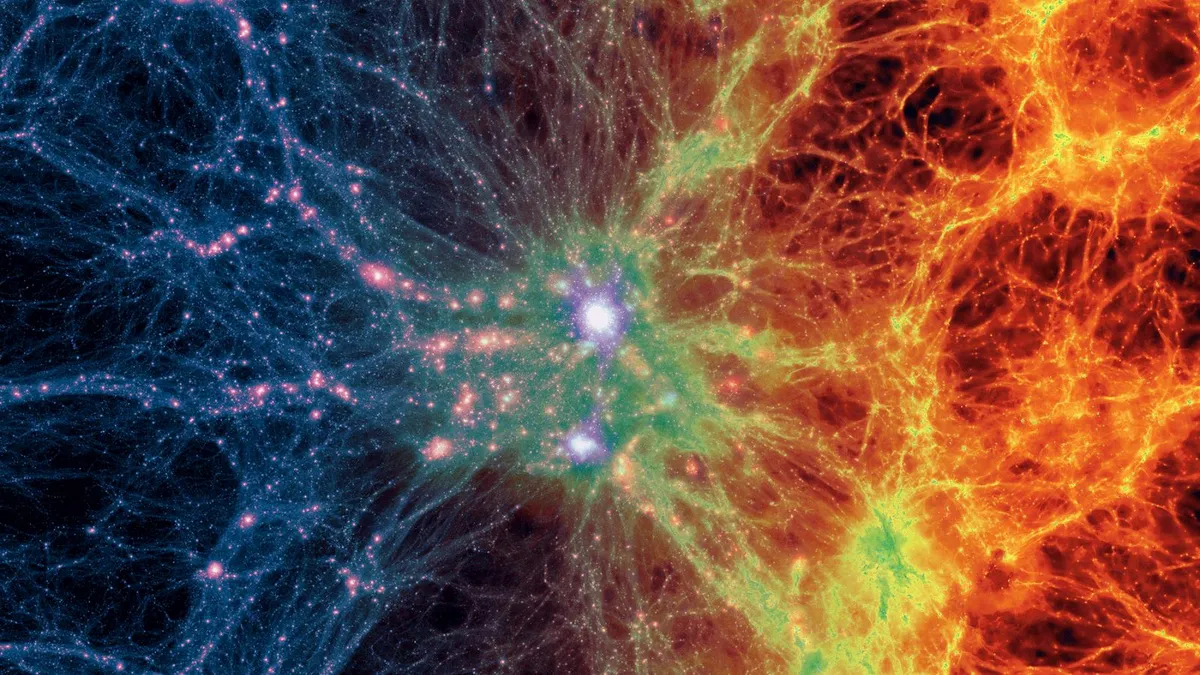
A groundbreaking discovery has been made by astronomers who have identified a vast tendril of hot gas that links four galaxy clusters. This extraordinary structure stretches an impressive 23 million light-years, which is approximately 230 times the length of our own Milky Way galaxy. With a mass that is ten times greater than that of the Milky Way, this filamentary structure is believed to account for a significant portion of the universe's missing matter, a mystery that has perplexed scientists for decades.
The term "missing matter" does not refer to the elusive dark matter, which remains largely invisible due to its non-interaction with light. Instead, it pertains to ordinary matter, composed of atoms—specifically, baryons, which include electrons, protons, and neutrons. These baryons are the building blocks of stars, planets, moons, and even our own bodies. For years, scientific models of the universe have suggested that nearly a third of this baryonic matter is still unaccounted for.
This recent discovery not only confirms the predictions made by these models but also offers insight into the Cosmic Web, a vast structure that illustrates how entire galaxies formed and clustered together in the early epochs of our 13.8 billion-year-old universe. The existing models, including the standard model of cosmology, have long theorized that this missing baryonic matter resides in massive filaments of gas that connect the densest regions of the cosmos.
Although astronomers have observed these filaments in the past, their faintness often resulted in their light being overshadowed by other cosmic sources, such as galaxies and quasars powered by supermassive black holes. Consequently, the characteristics of these filaments have remained largely elusive. However, for the first time, a team of astronomers has successfully determined the properties of one of these filaments connecting four galactic clusters within the local universe.
These four clusters are part of the Shapley Supercluster, a massive assembly of over 8,000 galaxies that ranks among the most significant structures in the nearby cosmos. Team leader Konstantinos Migkas from Leiden Observatory in the Netherlands expressed his excitement, stating, "For the first time, our results closely match what we see in our leading model of the cosmos – something that's not happened before. It seems that the simulations were right all along."
The newly observed filament is remarkable not only for its size and mass but also for its astonishing temperature, recorded at a staggering 18 million degrees Fahrenheit (or 10 million degrees Celsius). This temperature is approximately 1,800 times hotter than the surface of the sun. The filament extends diagonally through the Shapley Supercluster, providing crucial data for understanding cosmic structures.
Critical to the characterization of this filament was the utilization of X-ray data from the XMM-Newton and Suzaku telescopes. Suzaku, a satellite from the Japan Aerospace Exploration Agency (JAXA), mapped X-ray light across a vast region, while the European Space Agency's XMM-Newton focused on pinpointing X-ray emissions from supermassive black holes located within the filament. This collaboration enabled researchers to distinguish the gas in the filament from other cosmic contaminants.
Florian Pacaud, a researcher from the University of Bonn, noted, "Thanks to XMM-Newton, we could identify and remove these cosmic contaminants, allowing us to focus solely on the gas in the filament." The team's successful approach confirmed that the filament aligns with predictions from their large-scale simulations of the universe.
The revelation of this previously undiscovered tendril of hot matter linking galaxy clusters has significant implications for astronomers. It enhances scientists' understanding of these extreme structures and their connections across vast cosmic distances. This discovery could further illuminate the mysteries of the Cosmic Web, which serves as a cosmic scaffold, contributing to the current configuration of the universe.